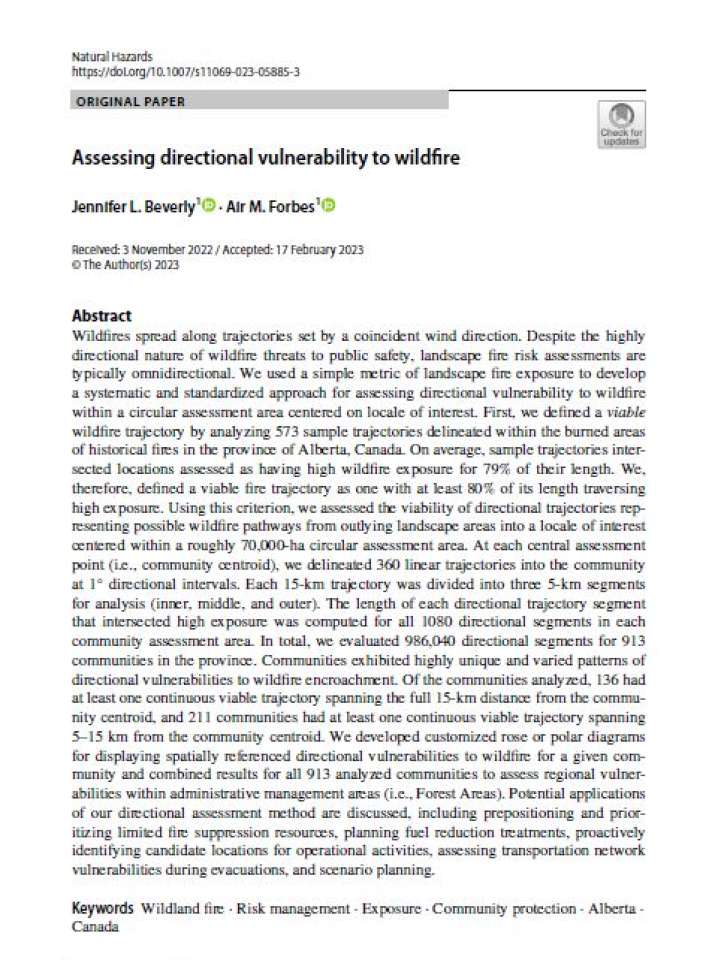Assessing directional vulnerability to wildfire
In this study, the authors used a simple metric of landscape fire exposure to develop a systematic and standardized approach for assessing directional vulnerability to wildfire within a circular assessment area centered on locale of interest. Wildfires spread along trajectories set by a coincident wind direction. Despite the highly directional nature of wildfire threats to public safety, landscape fire risk assessments are typically omnidirectional.
Of the communities analyzed, 136 had at least one continuous viable trajectory spanning the full 15-km distance from the community centroid, and 211 communities had at least one continuous viable trajectory spanning 5–15 km from the community centroid. The researchers developed customized rose or polar diagrams for displaying spatially referenced directional vulnerabilities to wildfire for a given community and combined results for all 913 analyzed communities to assess regional vulnerabilities within administrative management areas (i.e., Forest Areas). Potential applications of our directional assessment method are discussed, including prepositioning and prioritizing limited fire suppression resources, planning fuel reduction treatments, proactively identifying candidate locations for operational activities, assessing transportation network vulnerabilities during evacuations, and scenario planning.
Explore further
